When you play in front of an audience, it can appear that they are against you.
After all, you have a group of some size – whether just a few, or thousands – facing you and outnumbering you! Even though most people know in their conscious minds that they’re not really against you, this perspective can play tricks with your subconscious mind all the same.
Kind of like the above picture. Looking at it gives you a sense of vertigo, not really knowing which way is up. Despite knowing how stairs work and what they should be like, it’s really hard to tell what’s going on with these stairs!

Perspective
In his book, “The Perfect Wrong Note,” William Westney describes performing like this:
…my fears before going onstage had stemmed more from the sense of separateness — the austere formality of the stage, my isolated role as soloist under the lights, and the physical and psychological distance all this created between me and “them.” Even family and friends were temporarily part of the anonymous “them.”
In fact, the way it looks in most performance venues, you have the musicians separated by some distance from a bunch of chairs facing it. The visual looks like its “me vs. them”. Of course, this is not really the case, but our imaginations get the best of us under stress. And yet, when we talk to someone, we face them, right? But we don’t often assume they’re “against” us because they are looking at us. The best way to bridge that gap between the performer and your audience is the idea of sharing what you love.
If you don’t love your piece, surely you can find something lovable about it, even if it’s a simple melody. It’s all in your approach and your perspective, and it’s about getting back to “playing“. I don’t think it’s a misnomer to have that word apply to musical instruments, the jungle gym, and the basketball court.
 If you think for a moment how a child plays: what if they’re learning a new game (or making it up as they go)? Sure they listen to the rules enough to get them started, and they dive right in! What if they make a mistake? Oh well, maybe another kid will tell them, maybe not. They’re brand new to this, after all! They usually just keep going and shrug off the error, maybe learn more for next time.
If you think for a moment how a child plays: what if they’re learning a new game (or making it up as they go)? Sure they listen to the rules enough to get them started, and they dive right in! What if they make a mistake? Oh well, maybe another kid will tell them, maybe not. They’re brand new to this, after all! They usually just keep going and shrug off the error, maybe learn more for next time.
Or what if we imagine that same child playing at a recital. Now some kids take on the seriousness that we adults put on it and they walk stiffly up to the piano and focus on the minutiae of correct things to do without a thought to how the piece makes him feel. But then there are those kids that seem oblivious to how serious this recital stuff is. They jaunt up to the piano and start playing even before they’re fully seated on the bench, and they just have at it! They love this song because it’s about Star Wars, and it’s the coolest thing to be able to play that theme, and don’t you just love it too? The piece is over and they have effectively communicated in their playing what it means to them.
So we need to remember to actually “play” our instrument, not “work” it or “slave-drive” it. And this all comes back to communicating how we feel about it. Thinking about our shaky fingers won’t get us there, nor will thinking about the audience or anything but focusing on the music itself. You learn to do this a little at a time, over several performances. If you can learn to do it using some “test” performances before the actual performance, all the better.



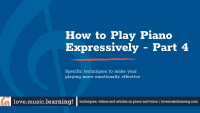
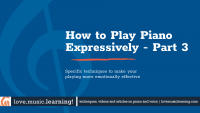
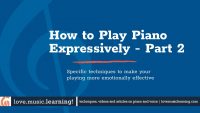
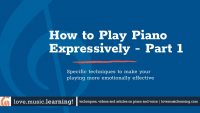
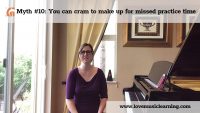

Leave A Comment
You must be logged in to post a comment.